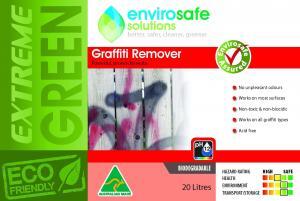![]()
 Australia’s iconic river systems, including Perth’s Swan River, are not only a popular tourism drawcard but provide a haven for wildlife and a precious source of drinking water.Pollution remains a major threat to keeping our waterways eco-friendly. Industrial liquid waste swept into rivers from stormwater catchments pose one of the greatest threats.
Australia’s iconic river systems, including Perth’s Swan River, are not only a popular tourism drawcard but provide a haven for wildlife and a precious source of drinking water.Pollution remains a major threat to keeping our waterways eco-friendly. Industrial liquid waste swept into rivers from stormwater catchments pose one of the greatest threats.
Harmful bacteria contaminating Perth’s Swan River in August this year forced prompted a public warning to avoid popular water sports.
The West Australian Department of health issued the warning to river users after discovering high levels of a bacterium called enterococcus.
The antibiotic-resistant strain posed significant health risks to recreational users, ranging from meningitis, to gastrointestinal, respiratory and skin infections.
The bacterial outbreak also threatened the Swan River’s image as environmentally-friendly. Liquids from wastewater run-off and faecal matter from warm-blooded animals were considered to be the most likely causes of the contamination.
Popular water sport areas including Garvey Park, Cracknell Park and Belmont Park were contaminated. Officials warned against swimming near any stormwater drains, particularly after heavy rainfalls as non-eco-friendly liquid products would be most concentrated in these areas.
River history
Despite historical and ongoing threats to their ecology, Australia’s river systems have proven remarkably resilient. The construction of dams has allowed river communities to benefit from a reliable water source but has been met with concern by green revolution proponents by limiting natural flooding and drought periods.
As recently as the 1970s the mud flats along the Swan River were used as rubbish tips by local councils and non-eco-friendly liquid waste from industrial and agricultural sources leached toxins into the river.
Nutrients from farming activities and improper disposal of non-environmental cleaning products high in phosphates contribute to algal blooms in warmer months.
Protecting the Swan River
The Swan River Trust has designed a Healthy Rivers program to improve water quality within the Swan and Canning rivers by:
- Reducing nutrients and other contaminants;
- Minimising sediment loads entering the rivers;
- Increasing oxygen levels in the rivers; and
- Protecting and rehabilitating foreshores.
These goals were identified as part of the Swan Canning Clean-up Program, which found chemicals from non-eco-friendly industrial liquids were a major concern.
“Chemicals have the potential to harm people and the environment if not managed correctly. Chemical blending can pose a threat to the quality of water resources through inappropriate storage, handling and disposal of the chemicals.”
Leading Perth-based environmental cleaning products company Envirosafe Solutions has worked with the industrial sector to encourage the correct use, handling and transportation of chemicals.
As part of its commitment to the best-practice handling of workplace chemicals, its Extreme Green range is clearly marked with an independent hazard rating on product labels.
This industry-leading measure has been designed to support businesses in adopting safe-handling practices.
The proper use, storage, transportation and disposal of chemicals help safeguard vulnerable river systems including Perth’s Swan River. Switching from toxic chemicals to environmental cleaning products is a simple step toward better water quality – for more information contact Envirosafe Solutions’ on 1300 88 90 70 or email info@evss.com.au.
Sources:




















